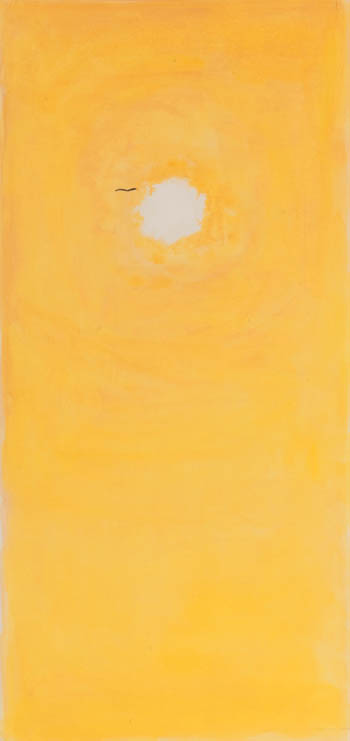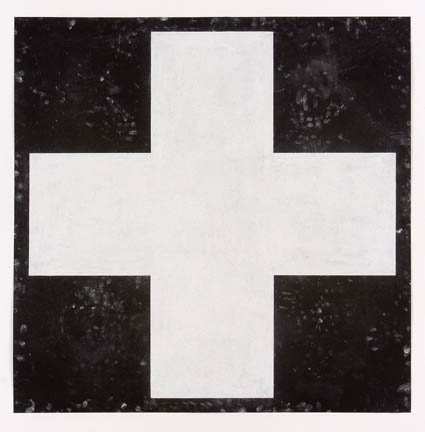Working somewhere between abstraction and representation, Robert Moskowitz isolates silhouettes of familiar objects in his paintings, reducing them to minimalist essentials. But you can always see evidence of the artist’s touch – a sprinkling of fingerprints in the white spaces.
In his last show in San Antonio in 2007, the New York artist showed his paintings of modernist icons that had become a sort of trademark – the Twin Towers of the World Trade Center. Though he is known for his monochromatic paintings in oils and pastels of skyscrapers such as the Empire State and the Flatiron buildings, he stopped painting the Twin Towers on Sept. 11, 2001.
“Now the images seem unbearably grim, and I haven’t been able to sell one since 9-11,” he said at the time.
Moskowitz, who divides his time between New York and Nova Scotia, came to prominence in 1978 when his work was included in the “New Image Painting” exhibit at the Whitney Museum, though he had his first one-person show at the Leo Castelli Gallery in New York in 1962. He had a mid-career retrospective organized by Washington’s Hirshhorn Museum in 1989.
In his current show at the Lawrence Markey Gallery on view through July 16, Moskowitz is showing a more eclectic range of images with more emphasis on nature than architecture. Although his paintings tend to look like messy graphite drawings, he actually works in pastels and oil on paper. His fifth solo exhibit with Lawrence Markey features a fully illustrated catalog with an essay by Philip Van Keuren.
Dominating the show is a large painting of a symmetrical tree in black and white on two large sheets of paper with a velvet matte finish. The tree has an almost folk quality with highly stylized limbs that seem like chunks of frozen black lightning. His fingerprints seem to buzz around the trunk and limbs like insects, though the tree also resembles a cross, perhaps a symbol of crucified nature.
Other images of nature are compressed onto much smaller sheets of paper. An iceberg floats on an inky black sea. A red bird looks at a burnt black tree limb in a snowy landscape. A glowing red sunset appears over a blackened, desolate landscape. The partially obscured sun appears to burn through a dense layer of haze in a series of yellow-orange drawings titled “Vincent.”
Moskowitz’s simple, richly textured images that appear to bubble up from his subconscious can be uncannily prescient, anticipating our heightened sense of endangered nature because of the BP oil spill. Or, maybe his images are so stripped of the superfluous that it’s easy to project topical concerns onto them.
“Red Cross (White on Black),” the other large painting in the show, looks like the flag for the international relief organization rendered in grim black-and-white, perhaps a symbol of our efforts to render aid to a natural environment damaged beyond human help by all-too-human greed.
A light on top of the Empire State building appears to be a beacon in a dark night sky as if there was a total blackout in New York. A lighthouse outlined by a dusky blue sky glows as a beacon of hope in “Eddystone.” And there is a silhouette of a discus thrower, with just the arm holding the discus and the curves of the athlete’s back and legs suggesting the vestiges of an ancient Greek myth.
Though primarily concerned with the pared-down formal qualities of the images he works with, Moskowitz seems to be in touch with the deepest, darkest parts of the nation’s psyche.









1 comment
Hello Bob, picked up on your recent work…
Long time since NY …I’ve been in Buffalo
near thirty years…try to keep up with all my ex’s grad school-wise…hope you’re well and getting work out the door…you were instrumental in my figuring out a painter’s life…it took two more marriages and five kids…